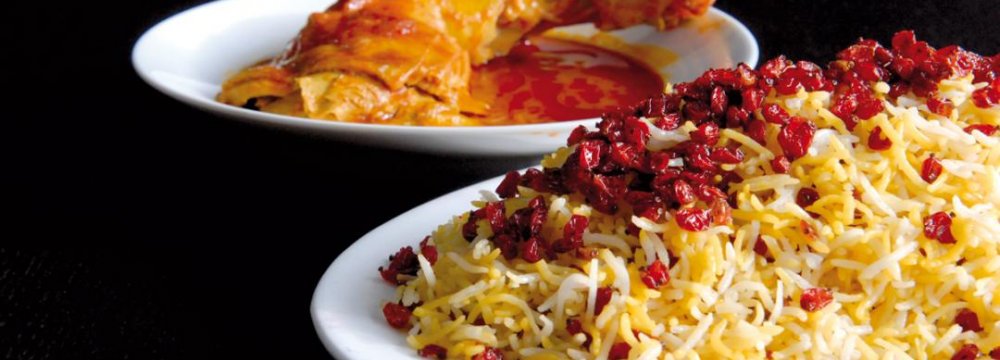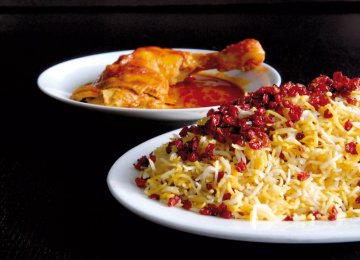The importance of food can be attributed to the fact that it is one of the most essential and significant aspect of human life for its survival and well-being. Though the main function of food is to serve as an answer to hunger or physiological reasons, it has various symbolic meanings and attachments for different nations; as an expression of their cultural identity, religious functions, economic wealth and status, and sometimes even power.
Study of food habits all around the world, demonstrates that differences in social and cultural, economic and political, environmental and climatic conditions, particularly impact food choices and cooking habits.
Three meals a day, in numerous cooking styles and different dietary nutritional values, is a common food habit among peoples, wherever they may be.
Iran, which comprises many tribes and ethnic people with specific cultures and distinctive food habits, is an excellent place for tourists to taste a delicious meal unique to each region, according to ichto.ir.
Prehistoric & Historic Diet
Regardless of nutritional value, the prehistoric human consumed environmentally available foods just to get rid of hunger. Marine fishes mostly were eaten in cold mountainous zones, wild animal meat, jungle fruits and vegetables in sub-humid forest areas and herbivore animal meat and milk in arid and semi-arid regions, variously depending on the environmental geographic condition.
The discovery of fire changed human life and their eating habits. The raw meat was replaced with cooked meat and as humans gradually developed to form societies, their culinary skills also progressed. Food habits as a centric part of human life, relate to individual nation’s history, traditional sentiments and cultural norms. It was a religious taboo in ancient civilizations to consume meat of some animals.
Agriculture and reclamation of land was especially important in the Achaemenid Era, based in Western Asia in Iran, founded in the 6th century BC by Cyrus the Great. Grains, especially wheat, were a useful food source and consumed by the Persians for the first time. Livestock farming and animal sacrifices was also customary in the Achaemenid Empire.
Ancient Persians were also aware of “harmful foods and malnutrition losses” and avoided eating meat of reptiles, carnivores and amphibians. Over the centuries as societies developed and became civilized and cultured, the art of cookery became more creative, artistic and sophisticated.
Barley, bread, honey, vegetables, date, milk and dairy besides the main dish of rice, became part of Persian cooking and recipes.
Silk Road
The Silk Road as the first and the most important road to convey goods and cultures of ancient times, inter-connected the lands of the great empire, from where Indian spices imported to Persia were used for cooking foods. Eating Indian chicken became widespread around the Empire with the advent of Zoroaster.
Archaeological excavations in Tappeh Sialk (Kashan Province), Tappeh Hesar (Damghan, Semnan Province) and Giyan Tappeh (Nahavand city, Hamedan Province) prove that ancient people believed in life after death so they put food for the dead soul into the graves. Having perfection, Parthian food habits were analogous to the Achaemenid dynasty. Trading fruits, sugarcane, saffron, date expanded through the Silk Road.
As foods in the Sassanid Era played a more significant role in people’s life, they cooked various kinds: grilled meat of domesticated animals and chicken and birds as a luxurious delicacy. They were many kinds of sweets, nuts and fruits with the grilled roasts to serve in ceremonies and functions.
Various new foods such as different kinds of cooked rice and stew, Kebabs and Aash (Persian vegetable soup), Koofteh (a ball-shaped Persian dish made of ground meat and rice), specifically from Safavid Era on, were prepared and displayed on colorful and appetizing Iranian tables or ‘sofres’.
Written cookbooks in Safavid Era for the first time grabbed attention. A history of Persian foods cooking methods and ingredients from Safavid and previous eras were explained in the books, available today. Increasingly, restaurants and coffee houses were launched and people spent more time and money for readymade food.
With a variety of fruits in the country, Iranians historically tended to eat more fruits. In Qajar dynasty, a diversity of foods was designed on ‘Sofre Qalamkar’ (printed Calico tablecloths).
Food Samples
One of the most famous and delicious Iranian foods is ‘Chelo Kebab’ (cooked rice and grilled meat with side dishes). The oldest ‘Chelo Kebab’ restaurant opened 120 years ago in Tehran.
Jooje Kebab (chicken grilled pieces), Ghorme Sabzi (a vegetable and preserved meat stew with boiled rice), Abgoosht (a meat, tomato and chickpea stew with bread), Fesenjan (a stew with walnuts, meat and pomegranate souse), Dolmeh (cooked rice, meat and split pea wrapped in grape leaves) are a few other samples of mouth-watering Iranian foods.
It is obvious that Iranian foods and cooking influenced other nations too in different historical periods.
Contentment and gratification for eating food and hospitality are prominent characteristics of Iranians in all eras.
Nowadays, food tourism, as a new branch, is gradually becoming widespread. Unique Iranian local foods are a remarkable aspect of tourism improvement.





